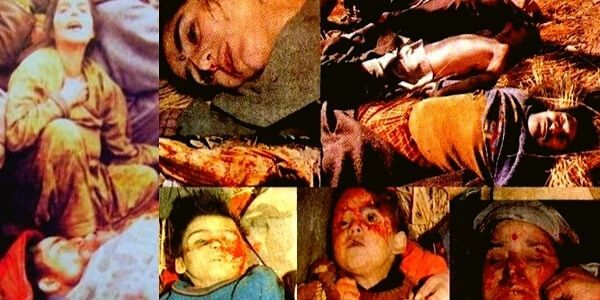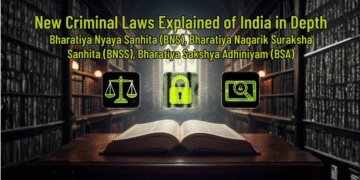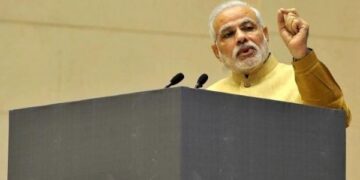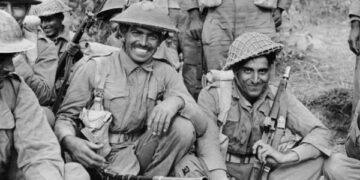It has been 30 years since the Valley’s minority Hindu Kashmir Pandit population “exodus.” We shall discuss the Kashmiri Pandit Exodus or Massacre, as well as the Kashmir Issue and Genocide, in this post. Kashmir has always been and continues to be a part of India. Like the rest of India, it has a pluralistic and secular culture. Let us now look a little deeper into this topic.
About Kashmir Pandit Exodus
Before the rise of Islamic militancy in the Kashmir Valley, Kashmiri Pandits lived in the valley. During Dogra control (1846–1947), Kashmiri Pandits were a popular segment of the valley’s population. As a result of the 1950 land reforms, 20% of them departed the valley, and by 1981, the Pandit community accounted for 5% of the entire population. They began to flee in greater numbers in the 1990s when militancy erupted as a result of persecution and threats from radical Islamists and militants. The events of January 19, 1990, were especially heinous. Although there is no official data, roughly 100,000 Kashmiri Pandits out of a total population of 140,000 departed the valley in the 1990s. (Kashmir pandit exodus)
In Jammu’s refugee camps, many Kashmiri Pandits have been living in deplorable conditions. Terrorist threats to Pandits still residing in Kashmir have been recorded by the authorities. In 2010, the Government of Jammu & Kashmir stated that 808 Pandit families with a total population of 3,445 persons remained in the Valley and provided financial and other incentives to entice others to return. According to a government study from Jammu and Kashmir, 219 members of the group were killed in the region between 1989 & 2004, but none since.
According to a survey conducted by the local organization ‘Kashmir Pandit Sangharsh Samiti’ in 2008 and 2009, 399 Kashmiri Pandits were killed by rebels between 1990 and 2011, with 75 percent of them killed in the first year of the Kashmiri insurgency.
Background
- Sheikh Abdullah ended up dead in 1982, and his son Farooq Abdullah took over as leader of the National Conference, winning the 1983 election.
- However, within two years, the NC was disbanded, and dissident Ghulam Mohammed Shah was installed as Chief Minister. This resulted in widespread discontent and political instability.
- The terrorist group Jammu & Kashmir Liberation Front (JKLF) increased its activities, and the 1984 execution of militant commander Maqbool Bhat added to the atmosphere of gloom.
- After the Rajiv Gandhi government opened the Babri Masjid locks in 1986 to let Hindus pray there, there were vibrations in Kashmir as well.
- A series of attacks on Hindu temples, stores, and properties of Kashmiri Pandits were blamed on separatists and secessionists in Anantnag, the seat of then-Congress leader Mufti Mohammad Sayeed.
- Pandits had become a target for assassination. The community’s most prominent members were being assassinated.
You can read about the Indo-Pak War of 1971 before moving on to the main topic. However, it is an important requirement for the IAS test. As a result, we’ve covered everything you need to know about preparing for the IAS exam. Let us now discuss the Kashmir Pandit Exodus or Massacre, as well as the Kashmiri Pandit Issue and Genocide.

What Happened in January 1990
- On January 19, things came to a head. The Farooq Abdullah government had been deposed by then, and Governor’s Rule had been implemented.
- There were threatening slogans over loudspeakers from mosques and on the streets, according to testimony released by many famous Kashmiri Pandits.
- Speeches were given in praise of Pakistan and the dominance of Islam, as well as in opposition to Hinduism. The Kashmiri Pandit community eventually decided to leave.
The Massacre of Gawkadal
- On January 20, the first wave of people began fleeing the Valley, cramming their possessions into whatever kind of transportation they could find. After more Pandits were killed, a second, larger wave left in March and April.
- The CRPF gunned killed 160 Kashmiri Muslim rioters at the Gawkadal Bridge on January 21, in what has been recognized as the deadliest massacre in the lengthy history of the Kashmir conflict.
- The Kashmiri Pandits’ departure and the Gawkadal massacre happened within 48 hours of one other.
How Many Kashmiri Pandits Left (Exodus)
- According to some statistics, more than 70,000 Kashmiri Pandit families left between 1990 and 1992, according to the Kashmiri Pandit Sangharsh Samiti (KPSS).
- According to the KPSS, 399 Kashmiri Pandits were slain by terrorists between 1990 and 2011, with the bulk dying between 1989 and 1990.
- During these three decades, about 800 families have stayed in the Valley.

Present Status of Kashmiri Pandits
- Apart from the camps in Jammu, some Kashmiri migrants live in existing transit accommodation in the Kashmir Valley at Vessu (Kulgam), Mattan (Anantnag), Hawl (Pulwama), Natnusa (Kupwara), Sheikhpora (Budgam), and Veerwan (Baramulla), according to the Home Ministry.
- There are relief zones with offices set up. For the relief of Kashmiri Pandits, numerous orders, circulars, and recommendations have been issued.
- Following the departure of the Kashmiri Pandit community, a number of socio-political organizations have emerged to represent the displaced population’s cause. Through peace negotiations, mobilization of human rights groups, and employment development for Pandits, these organizations are participating in the rehabilitation of the valley’s community.
- The Kashmir Division had 124,078 Hindus in the 1981 census. The majority of them were Pandits. Following the unrest in 1989, a large number of Pandits felt threatened and fled to other parts of India. Only 2,700-3,400 Pandits were reported to survive in Kashmir Valley by 2011.
- More than 60,000 households, including some Sikh and Muslim families, are recognized as Kashmiri migrants, according to the Indian government. The majority of the families were relocated to Jammu, Delhi, and other nearby states.
According to a report from a parliamentary group in 2020:
- According to a report from a 2020 parliamentary group, J&K has 64,827 registered migrant households, including 60,489 Hindu families, 2,609 Muslim families, and 1,729 Sikh families.
- 43,494 families are registered in Jammu, 19,338 in Delhi, and 1,995 in other States and Union Territories, out of a total of 64,827.
- After the situation improved, the exiled community intended to return. They haven’t done so since the situation in the Valley is still volatile, and they are afraid of losing their lives.
- The community has come to the understanding that the Valley is no longer the same as it was in 1990.
- Those who rebuilt their lives elsewhere in the country or went overseas have a lower likelihood of returning to the Valley
Kashmiri Pandit Genocide & Issue
The denial of the genocide of Kashmiri Hindus has been ingrained in the country’s common psyche for years. However, the culprits have never been held accountable because of silence, apathy, counter-narratives, and conspiracy theories that blame the victims for the exodus.
The migration of Kashmiri Pandits and the genocide they faced were viewed as political hot potatoes. No political party or prominent members of civil society bothered to proclaim the truth or raise their voices in support of persecuted minorities.
Genocide, conspiracy to commit genocide, direct & public incitement to commit genocide, attempt to commit genocide and cooperation in the genocide were all included in the proposed statute. The Panun Kashmir Genocide and Atrocities Prevention Bill 2020 also proposes multiple degrees of punishment for helping, abetting, or perpetrating genocide, ranging from life imprisonment to the death sentence.
The bill acknowledged the concepts of “cultural genocide” and “economic genocide.” It also advocated for the compilation of a database of all Kashmiri Hindu sacred sites within the Jammu and Kashmir Union Territory.

Conclusion- Kashmiri Pandit Exodus
In this post, you’ll learn everything you need to know about the Kashmiri Pandit Massacre (Kashmir Exodus), history, the Kashmiri Pandit Issue & Genocide, and other vital topics for the UPSC exam. Kashmiri Pandit Exodus and the genocide that has been committed against them. It will assist you in preparing for the IAS test. It is necessary to keep a completely separate notebook in which you will write down all important points and study them during the examination. Visit the official website for the most up-to-date UPSC and IAS exam information.
FAQ– Kashmiri Pandit Exodus
The events of January 19, 1990, were especially heinous. Mosques declared that Kashmiri Pandits were Kafirs on that day, and that males had to leave Kashmir, convert to Islam, or face death. Those who picked the first of these options were advised to leave their wives at home.
According to some sources, 10,000 Kashmiri Hindus converted to Islam as a result, sowing the seeds of Islam in Kashmir.
With effect from October 31, 2019, the act divided the former state of Jammu and Kashmir into two union territories: Jammu and Kashmir and Ladakh.
The film “Kashmir Files,” which is currently trending worldwide, has provoked a major emotional response in India and around the world. It is described as a collection of feelings rather than a film. It reflects only a portion of the violence done against Kashmiri Pandits and other locals.

Editor’s Note | Kashmiri Pandit Exodus
Here we will conclude our article. We’ve added information about the Kashmir Pandit Exodus to the article above. Furthermore, we have discussed the Massacre, the Kashmiri Pandit Issue, and Genocide. IAS is a competitive civil service test that aids in the administration and management of a country by the proper individuals. Every year, thousands of people apply for the civil service competitive tests. Visit our website on a regular basis to ensure that you do not miss any part of the study. You can also read about other important topics here. The UPSC examination is far from simple. It necessitates a great deal of focus, devotion, and hard work. Those who combine these characteristics, on the other hand, find it easy to crack. And at last, we wish you all the best.







